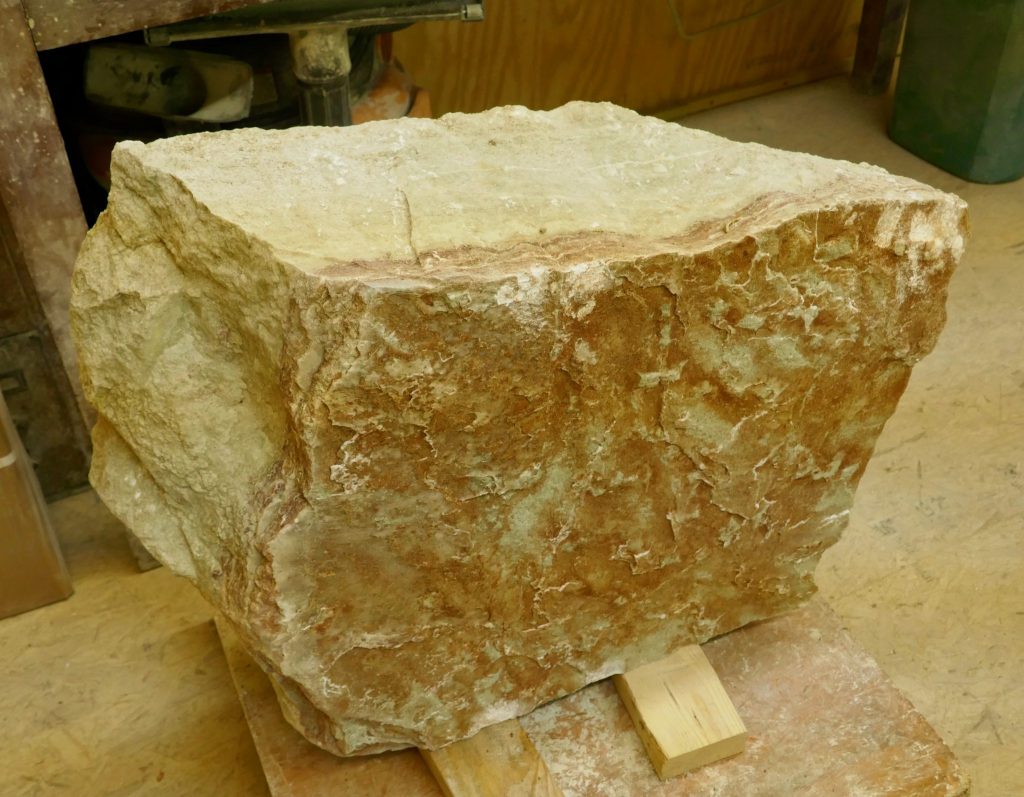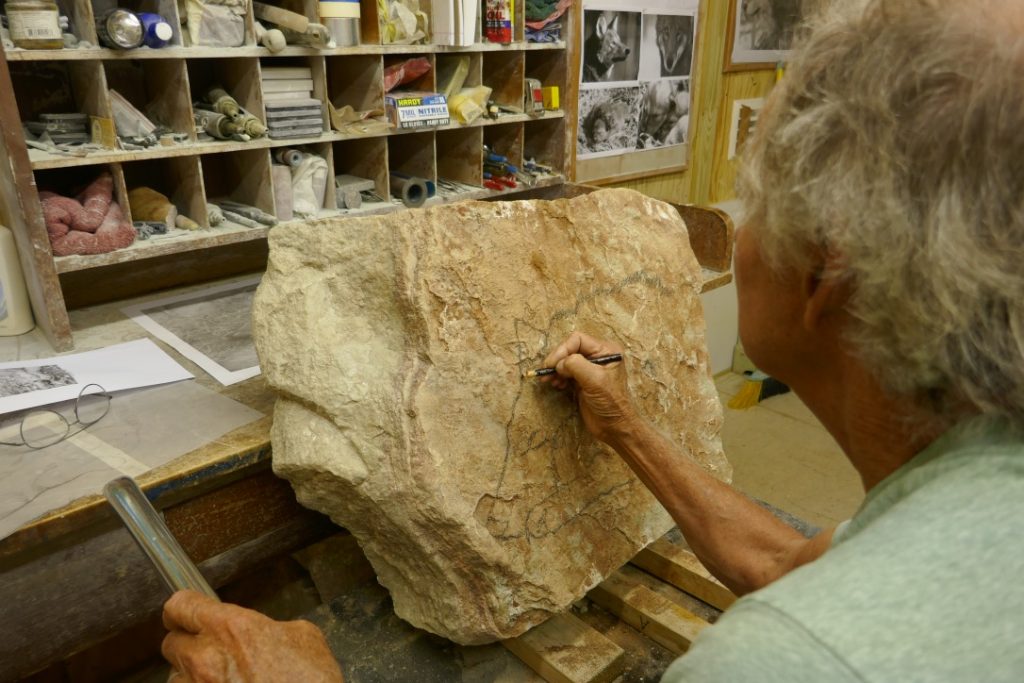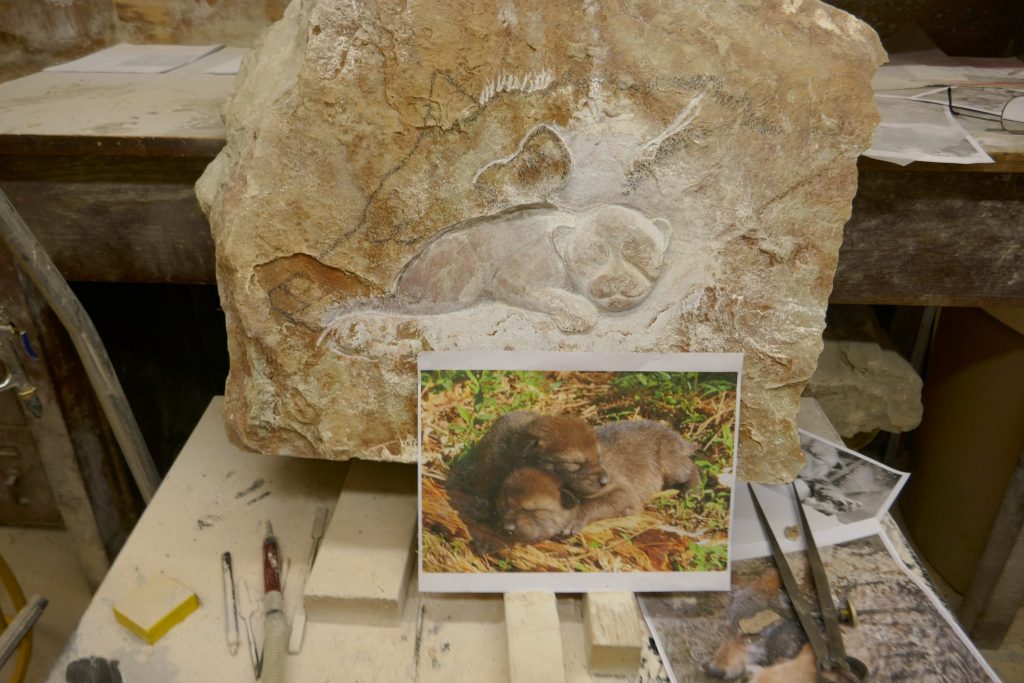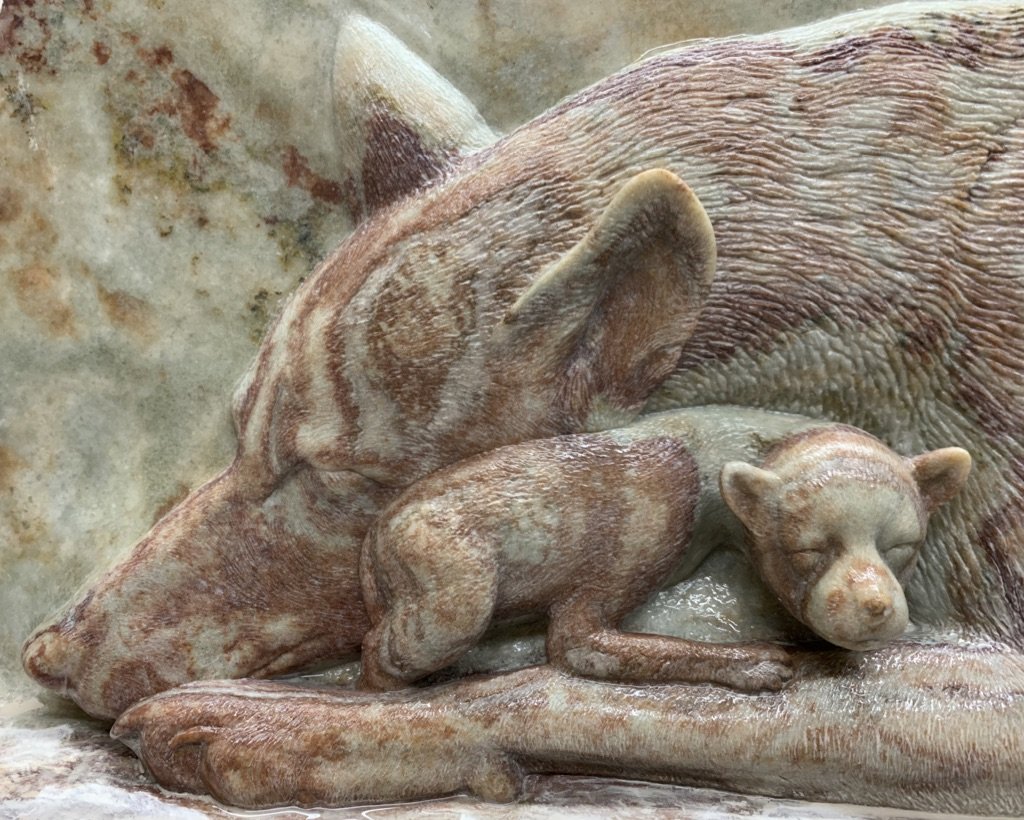Creating a Red Wolf Sculpture
Creating a Red Wolf Sculpture

The only wild red wolves live in our home state of North Carolina. Photo: Museum Life + Science
A red wolf sculpture was not on our minds when we visited the NC Zoo in 2018. But after seeing their red wolves for the first time, we learned the only wild ones in the entire world (yes, on the whole planet) live in our home state of North Carolina. And with less than 20 left in the wild and just over 250 in captivity, they are critically endangered and may soon become extinct (again) in the wild. For the whole story, read our blog “Red Wolves”.
Wow, we knew we had to do something to help protect these magnificent animals. So Dale came home to see if he could find the perfect piece of stone to create a sculpture to bring awareness to the plight of these wolves.

The raw stone, Utah alabaster
Is There A Red Wolf In The Stone Pile?
As he looked at his stone stash (and he has quite a pile of rocks), he came across a piece of Utah alabaster that screamed red wolves with red and green in the stone. And inside the stone, he could visualize two red wolves, a mom and her pup.
Can you look at this piece of raw stone and see a wolf sculpture? Well, I sure couldn’t but Dale saw them clearly.
Dale Sees A Bas-Relief

Dale decides to do a bas relief
Since the reddish coloring in the stone is only in the first several inches of rock, Dale decided to carve a bas-relief. A new challenge for him.
And what is a bas-relief? It is when a subject, in this case, the red wolves, is sculpted a few inches into the stone to give it a three-dimensional effect
It turns out bas-reliefs can be much more difficult than full depth, three-dimensional sculptures. You have to achieve the perception of depth without having much stone with which to work.
Getting Started

First, Dale sketches the mom and pup in the stone. But the pup proves very challenging.
After spending literally hundreds of hours studying photos and talking to red wolf experts, he is ready to get started. First, he sketches the mom and pup on the stone.
But the pup proves challenging to get its size just right. Should it be a newborn or several months old? These are all decisions Dale has to make at the beginning. One wrong cut and the sculpture could be ruined.
Weeks Later…
Sculpting is one of the most hazardous things you can do so Dale wears a lot of safety equipment. Here you can see the pup beginning to take shape.

Safety is always a concern when sculpting so Dale wears a lot of protective gear.
The Wolf Sculpture Is Taking Shape

Dale is measuring the head of the red wolf pup.
Four months later, Dale is still at work. The next stage includes roughly carving (or blocking-in) the mom and then fine-tuning some details on the pup.
He periodically puts water on the stone to see how the colors of the stone are developing. In this photo, he has put water on the mom but not the pup.
Finally, It Is Time To Carve The Fur
Dale carefully begins carving the fur into the mom.
With the sculpture finished, Dale treats the stone with numerous coats of clear sealant to enhance the coloration in the stone and protect it from the weather.

Carving the fur makes the red wolves come alive.
“Just Settling In”

The finished sculpture which we name “Just Settling In”.
And where does the finished sculpture end up? Wanting to find a home where it could bring the most awareness to the red wolf species, it is on loan to The Bradbury Museum.
The museum is part of Arkansas State University, home to the red wolf mascot. They also have a robust red wolf conservation program and we couldn’t be more pleased.
